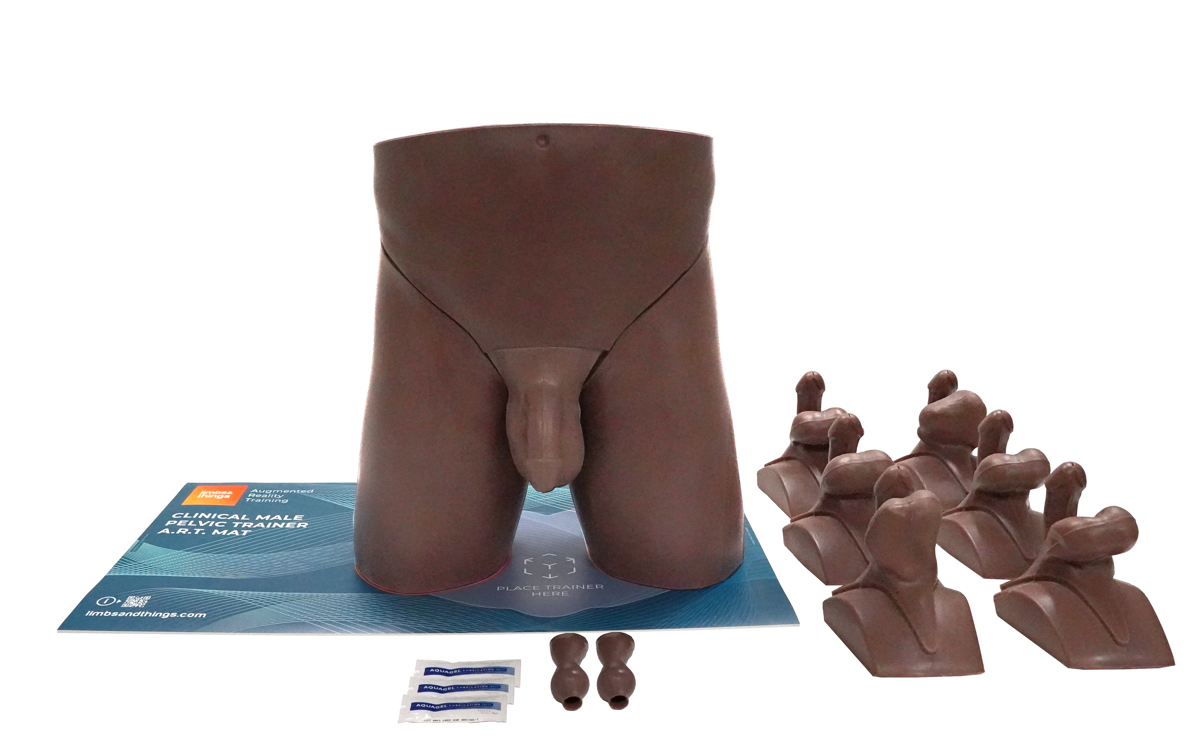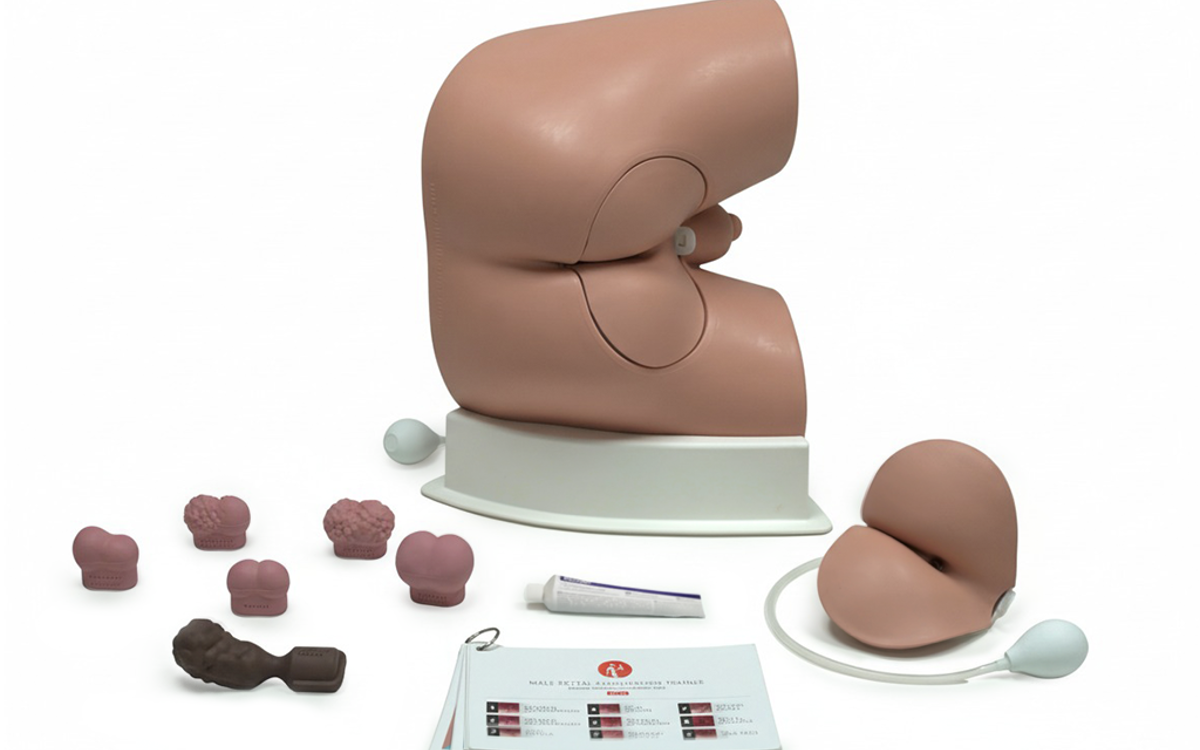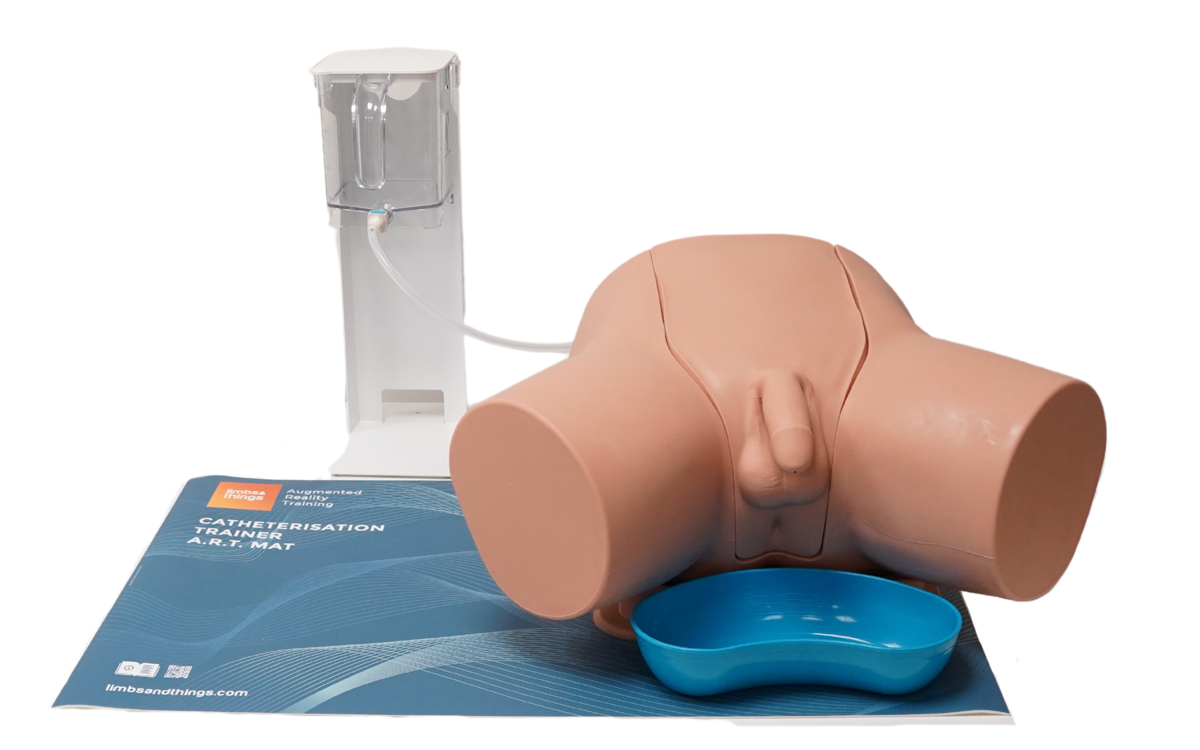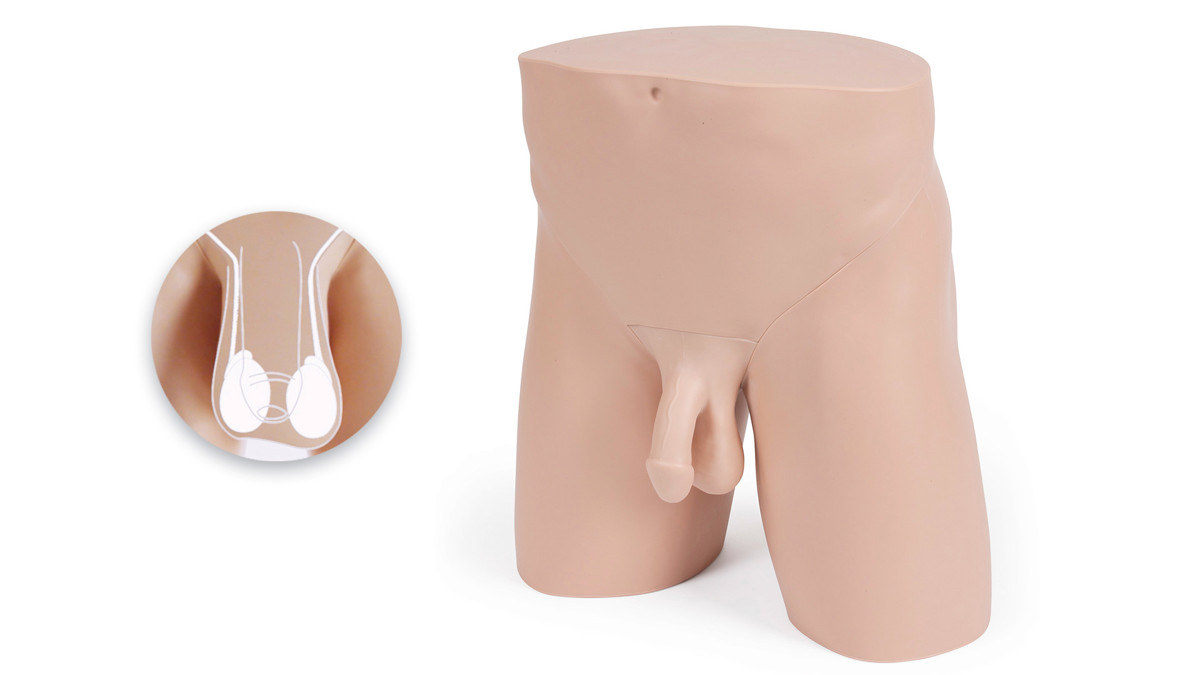
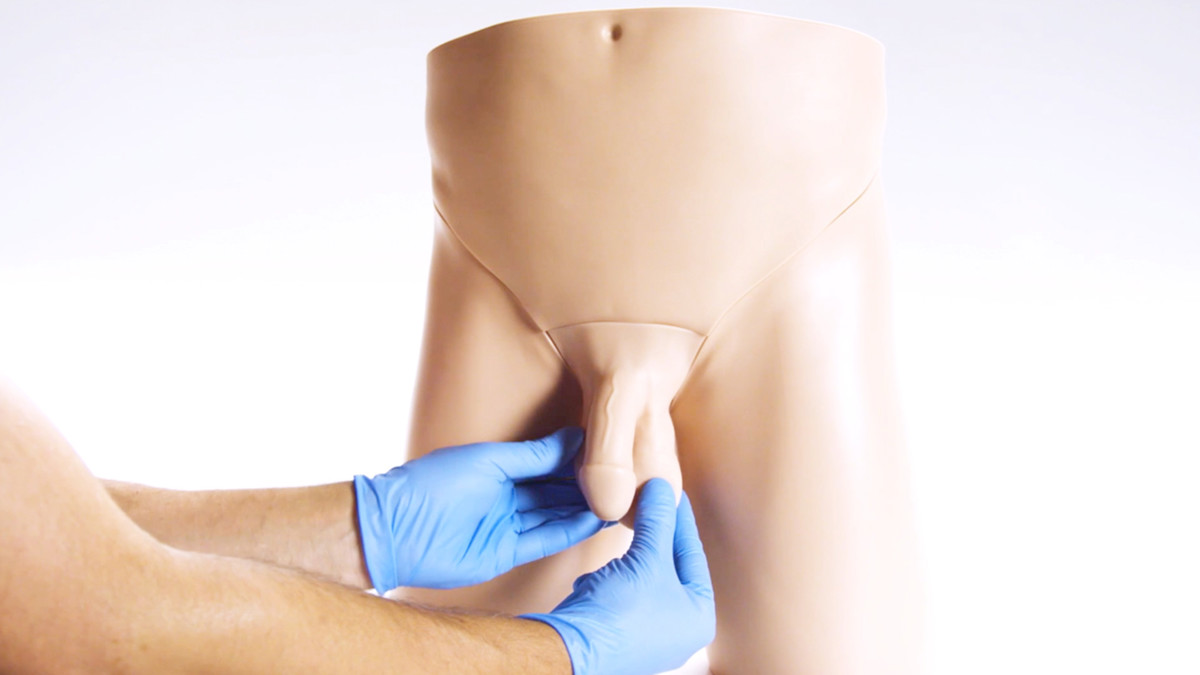







Clinical Male Pelvic Trainer (CMPT) Mk 2 - Standard (Light Skin Tone)
Skin Tone
Model
Adding to cart...
Added to cart
Sorry, something went wrong adding the product to the cart.
Our anatomically accurate trainer is an ideal platform for teaching and learning ‘hands-on’ male pelvic examination and diagnosis, taught as part of the undergraduate medical curriculum.
The Mk 2 male pelvic trainer offers a more realistic training platform than the previous model, with a robust representation of an adult male from umbilicus to mid-thigh.
This trainer was developed in collaboration with experts from:
- The Clinical Skills Resource Centre, University of Liverpool, UK
- Imperial College, London, UK
- Guy's Hospital, London, UK
- Southmead Hospital, Bristol, UK
- University of Southampton, UK
Our anatomically accurate trainer is an ideal platform for teaching and learning ‘hands-on’ male pelvic examination and diagnosis, taught as part of the undergraduate medical curriculum.
The Mk 2 male pelvic trainer offers a more realistic training platform than the previous model, with a robust representation of an adult male from umbilicus to mid-thigh.
This trainer was developed in collaboration with experts from:
- The Clinical Skills Resource Centre, University of Liverpool, UK
- Imperial College, London, UK
- Guy's Hospital, London, UK
- Southmead Hospital, Bristol, UK
- University of Southampton, UK
Overview
- Anatomically accurate male simulator that allows for realistic practice of the male pelvic exam
- A Foreskin Pack is included to practice procedures on both circumcised and uncircumcised anatomy
Realism
- Soft tissue genitals and abdominal wall
- Clear anatomical landmarks allow for a realistic palpation experience
- Penis, foreskin and scrotum respond in a life-like way under examination, adding realism
Versatility
- Allows training of male pelvic exam in both standing and supine positions
- Additional, pathological, modules can be purchased to offer more advanced training
Cleaning
- Clean product surfaces with a soft damp cloth, warm water and mild detergent, after every training session
- Allow to dry thoroughly before storing
Safety
- This product is latex free
- Only use water-based lubricant on the CMPT range
- Lubricate the foreskin before attaching it to the training module
- Do not leave foreskin on the model when not in use
- Wear gloves when handling the simulator, sharp surfaces such as jewellery and fingernails can damage silicone parts
Simulated Patient
- The Clinical Male Pelvic Trainers can be used with a simulated patient
Anatomy
Anatomy of the groin:
- Anterior Superior Iliac Spine (ASIS)
- Pubic symphysis and tubercles
Anatomy of male genitalia:
- Penis with attachable foreskins to simulate circumcised and uncircumcised anatomy
- Scrotum containing testicles with epididymis and vas deferens
Skills Gained
- Correct examination procedure of the male pelvis
- Dry catheterization
- Professional-to-patient communication
Examination and evaluation of:
- Normal anatomy
- Abdominal and pelvic pain
Product Contains
Comparison |
Model |
|
|---|---|---|
| What's included | Std | Adv |
| ART Mat for CMPT | No | Yes |
| CMPT Module 1: Normal | Yes | Yes |
| CMPT Module 2: Varicocele | No | Yes |
| CMPT Module 3: Tumors | No | Yes |
| CMPT Module 4: Epididymal Cysts | No | Yes |
| CMPT Module 5: Hydrocele | No | Yes |
| CMPT Module 6: Orchitis/Epididymo-orchitis | No | Yes |
| CMPT Module 7: Indirect Inguinal Hernia | No | Yes |
| CMPT Abdominal Insert | Yes | Yes |
| CMPT Pubic Bone | Yes | Yes |
| CMPT Foreskins Pack (contains 2 foreskins & 3 lubricant sachets) | Yes | Yes |
| Lower torso | Yes | Yes |
| Support Base | Yes | Yes |
| Carry case (trainer) | Yes | Yes |
| Carry case (modules) | No | Yes |
Works with the following products:
-
Light
-
Dark

CMPT Mk 2 Module 1: Normal (Light Skin Tone)
-
Light
-
Dark

CMPT Mk 2 Module 2: Varicocele (Light Skin Tone)
-
Light
-
Dark
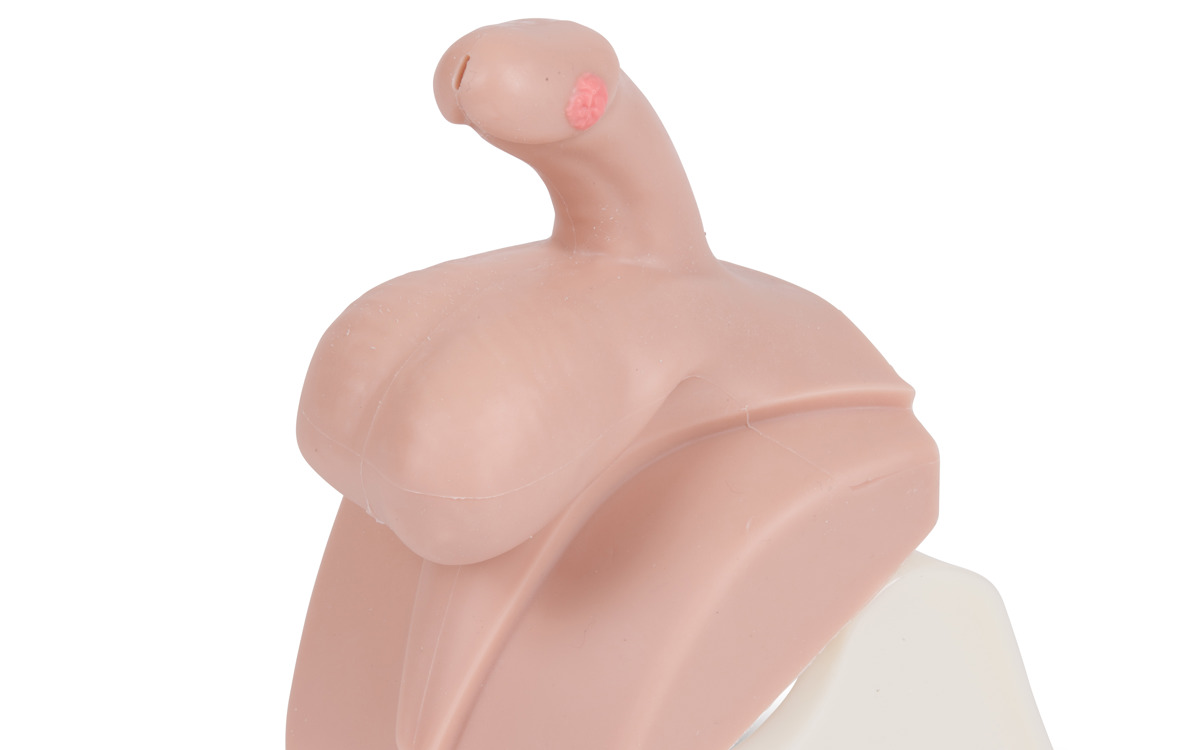
CMPT Mk 2 Module 3: Tumors (Light Skin Tone)
-
Light
-
Dark

CMPT Mk 2 Module 4: Epididymal Cysts (Light Skin Tone)
-
Light
-
Dark

CMPT Mk 2 Module 5: Hydrocele (Light Skin Tone)
-
Light
-
Dark

CMPT Mk 2 Module 6: Epididymitis/Epididymo-orchitis (Light Skin Tone)
-
Light
-
Dark

CMPT Mk 2 Module 7: Indirect Inguinal Hernia (Light Skin Tone)
-
Light
-
Dark

CMPT Mk 2 Abdominal Insert (Light Skin Tone)
-
Light
-
Dark

CMPT Mk 2 Foreskins (Pack of 2, Light Skin Tone)
-
Light
-
Dark

CMPT - Upgrade Kit - LST
References
RCN Competencies - Advanced Nurse Practitioners, 2012, p.4 ...receiving patients with undifferentiated and undiagnosed problems and making an assessment of their health care needs, based on highly-developed nursing knowledge and skills ... such as physical examination
AAFP Recommended Curriculum Guidelines for Family Medicine Residents, Men’s Health Reprint No. 257, 2016 p.3 Perform a comprehensive male physical examination, including urogenital... p.5 the resident should demonstrate the ability to independently perform or appropriately refer the following: 1. Male-specific examination a. Penile/testicular/scrotal exam c. Hernia/inguinal exam
CPMEC Australian Curriculm Framework for Junior Doctors v 3.1, 2012, p.7: History and Examination: Performs a comprehensive examination of all systems; Elicits symptoms & signs relevant to the presenting problem or condition. Discriminates between the possible differential diagnoses relevant to a patient's presenting problems or conditions
RACGP Curriculum for Australian General Practice 2016, SH16 Sexual and Reproductive Health Essential skills for general practitioners to develop and maintain include: ...undertaking a sensitive genital examination, if appropriate, to assess risk, determine appropriate assessment, investigation and management
not relevant
CPMEC Australian Curriculm Framework for Junior Doctors v 3.1, 2012, p.7: History and Examination: Performs a comprehensive examination of all systems; Elicits symptoms & signs relevant to the presenting problem or condition. Discriminates between the possible differential diagnoses relevant to a patient's presenting problems or conditions
Competence and Curriculum Framework for the Physician Assistant 2012, p 12 2.3.5 ...Perform a physical examination tailored to the needs of the patient and the demands of the clinical situation, including ...male uro-genital examination
Specialty Training Curriculum for Core Medical Training, 2013 p.86: Perform full examination including...scrotum, male urethra
The UK Foundation Programme Curriculum 2016. p.9: obtains history, performs clinical examination, formulates differential diagnosis and management plan (FPC 11)
The Intercollegiate Surgical Curriculum, Urology Surgery, Aug 2015 p.20 Recognise the common malignant and potentially malignant conditions of the penis...Diagnose and manage patients presenting with scrotal symptoms such as hydrocele, epididymal cyst, varicocele



